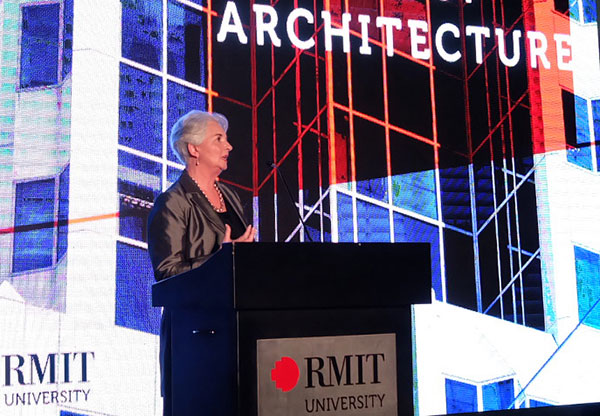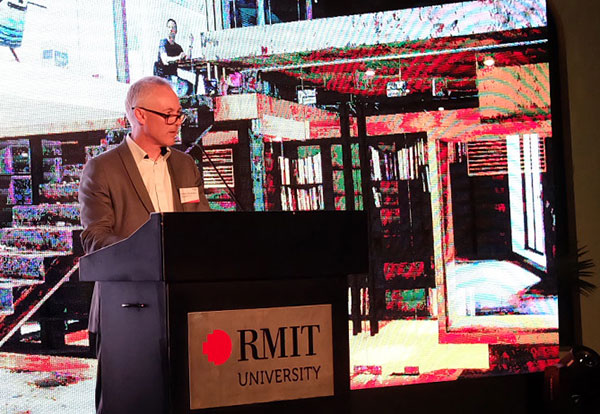RMIT University Vietnam launches Master of Architecture programme
 |
“What we really want is to produce graduates who are design innovators bringing something new, something totally different to the urban landscape here,” said President Professor Gael McDonald at the launch event for the university’s programme on November 15 in Ho Chi Minh City.
McDonald stressed the importance of environmental sustainability for the programme as well as for the country.
“Now in a country of over 90 million, with rapid urban, industrial and residential development, issues such as sustainable design, and cultural heritage preservation are paramount,” she said. “The durability of buildings, their impact on the environment, the potential for energy efficiency and a focus on using local low impact materials are all considerations that we want top of mind for our students. But we also want those buildings to be ones you’d be proud to live or work in. Buildings with unique design flair.”
The launch event was held at the university’s Pham Ngoc Thach campus, and included the attendance of local universities representatives and many of the country’s top architectural firms.
 |
“One of the highlights of the programme is our suite of Design Studios, where students collaborate with local architects and international peers on creative and conceptual projects. Students will be working in a dedicated studio space in the heart of Ho Chi Minh City, making it more convenient to collaborate with industry partners or students working in practice,” said Professor Rick Bennett, head of the Centre of Communication and Design.
Dr Gretchen Wilkins, acting programme director for the Master of Architecture programme, said that Vietnamese students will be able to extend their local education through an international, design-focused program taught by local and international architects.
“Throughout each semester, students will have access to a range of lectures and events led by prominent local and international architects,” Dr Wilkins said. “International exchange to Melbourne or other participating programs is also an opportunity.”
RMIT Australia is ranked as one of the world’s Top 40 Universities for architecture and built environment, according to the 2016 QS World Rankings.
What the stars mean:
★ Poor ★ ★ Promising ★★★ Good ★★★★ Very good ★★★★★ Exceptional
Latest News
More News
- Interest must rise for carbon exchange (December 19, 2024 | 16:00)
- Limitations abound for domestic EV carbon credits (December 19, 2024 | 15:00)
- Businesses pivotal in offsetting carbon measures in Vietnam (December 19, 2024 | 13:00)
- Coordination key for circular economy (December 19, 2024 | 10:56)
- Vietnam’s first logistics laboratory established (December 19, 2024 | 08:00)
- Masan Consumer Holdings honoured with consecutive "Great Place To Work" certifications (December 18, 2024 | 16:55)
- SABECO’s research facility a dream for its brewmasters (December 17, 2024 | 10:30)
- Digital twins reshaping Vietnam's logistics and supply chain landscape (December 17, 2024 | 09:34)
- Enterprises awarded for pioneering innovation to attract talent (December 16, 2024 | 16:43)
- Testing future predicted for technology startups in Vietnam (December 14, 2024 | 15:00)


















 Mobile Version
Mobile Version